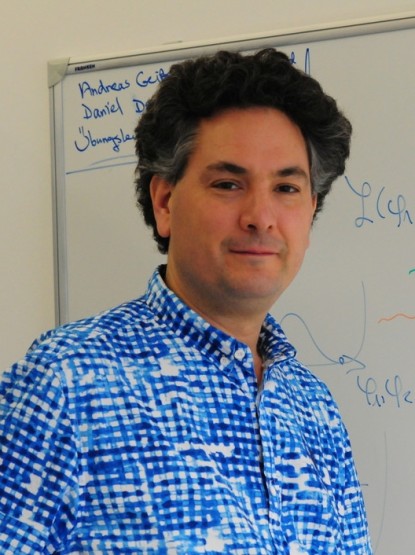Axion Cosmology
The axion is a hypothetical particle which, if it exists, would resolve the long standing issue of why the strong (QCD) interactions respect CP and T symmetries, by providing a mechanism for how QCD dynamically evolves to a state where such fundamental symmetries are respected. It simultaneously gives an interesting and testable candidate for the Dark Matter of the Universe. As such, it is very well motivated to try to understand better its cosmological role, and to predict the axion mass which correctly reproduces the dark matter abundance
The PQ mechanism adds an axionic term to the Lagrangian such that the axion couples to the CP violating term εµναβtr(GµνGαβ), where Gαβ is the gluonic field strength. At very high temperatures of the early universe this yields a new U(1)PQ symmetry, which is spontaneously broken at temperatures T < fPQ with the axion as the corresponding Goldstone boson. In cosmology, the axion is produced by the decay (with declining temperature) of cosmic axion strings, which are topological defects of the transition at T ≈ fPQ. At much lower temperatures of the QCD energy scale T ≈ ΛQCD = O(200 MeV) the PQ symmetry is anomalously broken by instanton effects, turning axions into pseudo-Goldstone bosons with a very small mass max ∼ 20µeV.
Our research focuses on the study of these topological objects, their dynamics, and their decay into axions. We have recently presented predictions for the axion mass under the assumption that the axion constitutes the Dark Matter. We are working on refining this prediction and on improving our understanding of the axion-generating dynamics and their possible role in generating very small-scale structures in the dark matter. We develop numerical tools to follow the axion from its roots in the early universe axion string network to the development of large and small scale structures, e.g., axion miniclusters and oscillons, as a consequence of the transition to massive axions. We aim to accurately determine the properties of such objects (size and mass distribution), thus providing necessary restrictions on the parameter space and guiding the experimental search for the axion in the cosmos.


